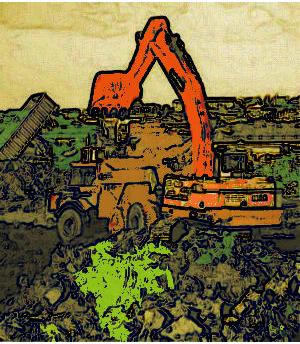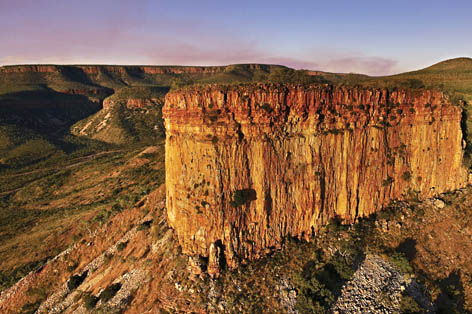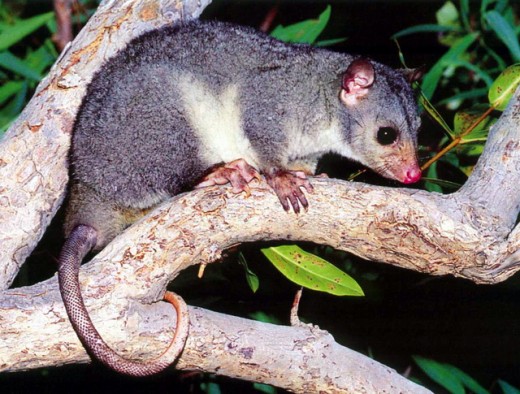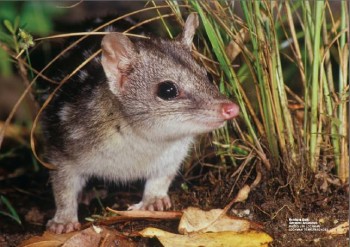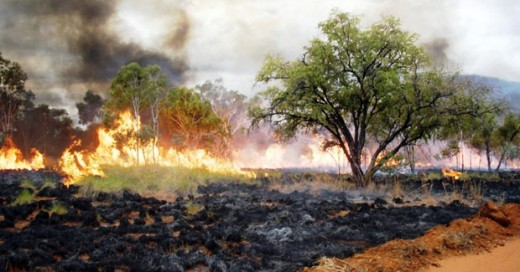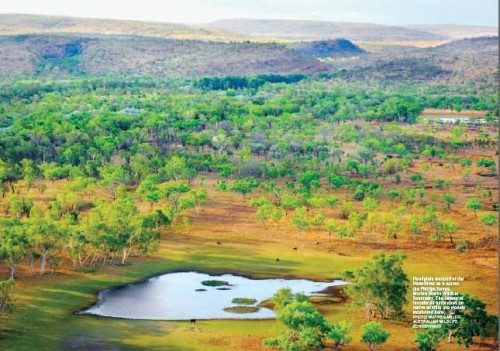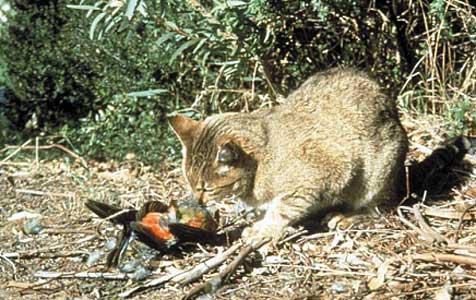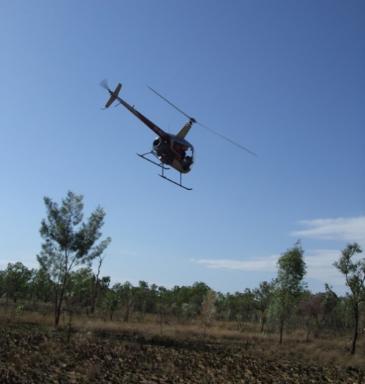Sth Aust farmers killing Hairy-nosed Wombats
Sunday, January 8th, 2012.
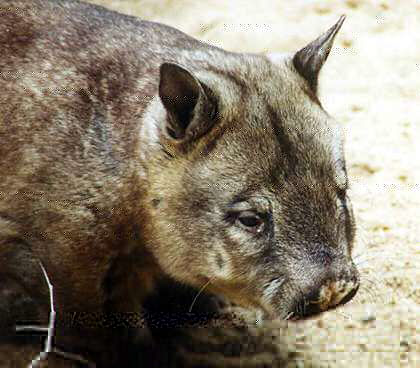 Southern Hairy Nosed Wombat (Lasiorhinus latifrons)
Southern Hairy Nosed Wombat (Lasiorhinus latifrons)
.
2009:
“Farmers are illegally slaughtering thousands of wombats in South Australia, a nature group says. Brigitte Stevens from the Wombat Awareness Organisation says burrows of southern hairy-nosed wombats are being bulldozed or blown up on Yorke and Eyre Peninsulas and in the Murraylands.
She says farmers can get permits to destroy a few wombats, but that it not a licence to wipe out the entire population.
“There’s not enough or not good enough regulations on what actually happens to the wombat if those numbers are being killed,” she said. “Now I know it’s difficult because I know you need a lot of staff to be able to do that. But it’s really hard for us when we’re trying to stop people killing them illegally – if it’s allowed by the government through permits, how are we going to stop it?”
Ms Stevens wants the Department for Environment and Heritage (DEH) to act on evidence the group has gathered.
“We’ve also got evidence, photographic, and also I’ve kept all my correspondence with DEH, the RSPCA about places that we’ve reported that have ended up having destruction permits, but we’ve got evidence the animals are being buried alive, the entire population is being killed on that particular property,” she said.
Department for Environment and Heritage chief executive, Allan Holmes, says it will act when enough evidence is provided. “You need to know where it’s occurred, when it occurred, it’s about providing evidence that will stand up in a court of law,” he said. “Again the issue for me is at the moment these claims are largely unsubstantiated. “If the evidence is provided we will investigate them.”
Mr Holmes says mass killings with petrol bombs or bulldozing will not be tolerated.
“The only way that you can legally destroy a wombat is by shooting with a particular calibre rifle,” he said. “And, as I said, given the evidence we will prosecute with the full force of the law.”
.
2011: ‘Hairy-nosed wombats feel farmers’ wrath‘
[Source: ‘Hairy-nosed wombats feel farmers’ wrath’ , 20110420, ^http://www.cfzaustralia.com/2011/04/hairy-nosed-wombats-feel-farmers-wrath.html]
.
They’ve always been uneasy bedfellows, but now Hairy-Nosed Wombats – a rare and protected marsupial – are being slaughtered in large numbers by South Australian farmers as their numbers boom thanks to abundant rain and plenty of food.
.
Nearly 900 southern hairy-nosed wombats have been shot with South Australian Government sanction since 2006, and there are claims that many more have been slaughtered illegally.
.
The Government also has rules which state that any young wombats found in the pouch of a shot wombat should be killed by decapitation, as this achieves “a sudden and painless death”.
Sickeningly, Parliament has been told that apart from the official deaths, hundreds more wombats are being killed illegally by landholders across the state.
As well as being the state’s animal emblem, the wombat is classed as a vulnerable species, but farmers claim its burrows destroy their land and damage farm machinery.
Like badgers in the United Kingdom, wombats are much maligned by the farming community and are seen as a menace, copping the blame for everything from soil erosion and breaking the legs of cattle (from falling into wombat burrows) to spreading disease.
Official figures show that between January 1, 2006, and December 22 last year, 139 permits were issued for destruction of South Australian wombats.
.
Hairy-nosed Wombats?
The much rarer southern hairy-nosed wombat has larger ears than the common wombat, and its snout is coated with fine hairs, whereas the northern hairy-nosed wombat is presumed extinct in NSW.
The southern hairy-nosed wombat prefers dry, open country bu have become very rare, and until recently were thought to be extinct in NSW. They are currently listed as endangered.
A wombat can reproduce after it reaches two years of age. Mating occurs between September and December, and usually results in one offspring. The newborn wombat, which weighs only 1 g and is less than 3 cm long, has to crawl from the birth canal into the mother’s pouch. This pouch faces backwards, which stops dirt and twigs getting caught in it when the mother digs. The young wombat will stay in the pouch for between seven and 10 months.
Because of settlement and agriculture, wombats in most areas have been pushed into the rugged hills and mountains. As long as they remain in these areas, wild dogs and collisions with cars are more of a threat to these marsupials than landowners. However, because of their habit of wandering down to the flats to enjoy the tasty morsels growing there (knocking down fences on the way), they are sometimes killed by farmers.
.
[Source: ^http://www.nationalparks.nsw.gov.au/npws.nsf/Content/Wombats].
‘Wombat Awareness Organisation‘
‘The Wombat Awareness Organisation (WAO) is a non-profit organisation specialising in large scale rescue, rehabilitation and conservation of the Southern Hairy Nosed Wombat (Lasiorhinus latifrons).
The Wombat Awareness Organisation is playing an instrumental role in preventing unneccessary suffering of the wild population of Southern Hairy Nosed Wombats in hope to conserve this incredible little Aussie for future generations.
When WAO established itself in the Murraylands of South Australia in 2007 we were overwhelmed at the lack of services and protective rights offered to SA’s faunal emblem. Battling the effects of drought and global warming, Sarcoptic mange, habitat destruction, vehicular accidents and culling both legal and illegal it was obvious that this species was in trouble. Getting back to basics and finding simple, productive alternatives of drought relief, mange management and coexistence strategies have become the main focus of the organisation by aiming to protect these beautiful wombats from suffering and minimise the need for them to come into care.’
.
Read More: ^http://www.wombatawareness.com/
.
‘Going Khaki’:
Government wildlife protection has long been a joke and so much so that ‘Government wildlife protection‘ has become an oxymoron. Community frustration is obviously a boiling point at learning about an endangered wildlife species being poached by selfish farmers for their own ends.
If there were a fund for taking out poachers of wildlife I would gladly donate to it.
If it were legal to shoot wildlife poachers I would be amongst the first to enlist. It is legal to shoot wildlife poachers in parts of Africa where it is needed…
.
‘Among Africa’s Eco-Mercenaries’
[Source: ‘Among Africa’s Eco-Mercenaries’, by Nicole Davis, National Geographic, 200210, ^ http://www.nationalgeographic.com/adventure/0210/life.html].
‘They’re trained to kill, with orders to shoot on sight. Could they be the saviors of Africa’s wildlife?
Writer Tom Clynes went deep into the Central African Republic to find out. Here he reveals the stories behind his new article, “They Shoot Poachers, Don’t They?”
This year Wyoming conservationists took their battle overseas into the savanna of the Central African Republic. With the permission of President Ange-Félix Patassé to shoot on sight, the group is raising a militia to patrol the eastern third of the African country for poachers.
Writer Tom Clynes spent nearly a month with the hired guns in this latest effort to stop the bush-meat trade, perhaps the pre-eminent threat to African wildlife today. The assignment was as complicated as it was fascinating.
“The good stories begin with intriguing questions. And in this case the questions were complicated and quite epic. You had a bunch of Americans who had basically convinced a leader of a Third World country to let them raise an army and take over a third of the country with shoot-on-sight authority,” says Clynes. “I had a good idea how I felt about this kind of thing: Killing is wrong—end of argument.”
.
‘They Shoot Poachers, Don’t They?‘
[Source: ‘‘They Shoot Poachers, Don’t They?”, by Tom Clynes, National Geographic, 200210, ^http://www.nationalgeographic.com/adventure/0210/story.html#story_1].
In the heart of central Africa, marauding bands of bush-meat hunters are terrorizing villages and slaughtering wildlife to the brink of extinction. Now a family practitioner from Wyoming has decided to recruit his own army to stop them.
The story, as I first heard it, had the zing of a Hollywood pitch: Led by a soft-spoken doctor, a band of American conservationists had persuaded the president of the Central African Republic to let them raise a militia and take over the eastern third of the Texas-size country. Their mission was to drive out the marauding gangs of Sudanese poachers who were rapidly wiping out the region’s elephants and other animals.
Their authority: ‘Shoot on sight’
No one had been killed yet when I arrived in Bangui in early March. Throughout the dilapidated capital, signs of a November coup attempt were still fresh: Bullet divots scored the bricks of the Tropicana Club, and a curfew remained in effect. A detachment of Libyan paratroopers hulked in front of the mansion of President Ange-Félix Patassé, who had been bailed out, again, by his friend Muammar Qaddafi.
Most of the fighting had taken place in the northern reaches of town, where the American group, Africa Rainforest and River Conservation (ARRC), had rented a gated compound. As I approached the large whitewashed porch, it struck me that ARRC was well prepared for another flare-up. Scattered among the wicker furniture were several men in fatigues, a couple of AK-47s, a grenade launcher, and a very excited chimpanzee.
Dave Bryant, a 49-year-old South African who had been hired in August to lead the militia, extended his hand. “Welcome to bloody paradise,” he said. He introduced a slight, 26-year-old Iowan named Michelle Wieland, who was in charge of ARRC’s community-development component, and a thin 35-year-old named Richard Hagen, who had flown up from South Africa to help with security.
“And the little fellow jumping up and down is Commando,” said Bryant. “We rescued him from a Sudanese trader, and to show his appreciation he’s been crapping all over our floors.”
Bryant’s face seemed custom-assembled for bad-ass impact. Beneath a clean-shaven scalp, a towering forehead descended into a deep ravine of a scowl line, bridged by wraparound sunglasses. An expansive Fu Manchu mustache arched around a loaded cigarette holder, which dangled expertly from one side of his mouth.
“I guess you’ve heard that we’re in a bit of a cock-up,” he said. “We’ve been stuck in this shit-hole for five months now, trying to get out into the bush to do a reccy [reconnaissance] before the rains hit. We’re waiting for gear, we’re waiting for money, and we’re waiting for vehicles. And we’re waiting for people in this zoo they call a government to do something other than put their bloody hands out.”
The three were eager to hear about my meeting that day with the American ambassador, Mattie Sharpless. Sharpless had recently arrived in Bangui, and I had asked her what she knew about ARRC.
“The rumor is that they’re hiring South African mercenaries and diverting funds into diamond ventures,” Sharpless had answered.
Wieland winced when I relayed the quote, but Bryant smiled and leaned back in his chair. “Yes, well. We South Africans don’t usually like to use the term ‘mercenary.’ We prefer to say ‘playing at soldiers on a privately employed basis.'”
